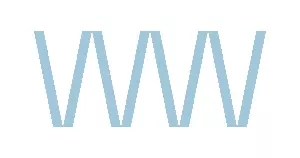On the eve of the house rising for the last time before the election, Government released the highly anticipated new national direction on freshwater management - a new National Policy Statement for Freshwater Management (NPSFM 2020), new National Environmental Standards for Freshwater (NESFW), new stock exclusion regulations, and amendments to the regulations for the measurement and reporting of water takes.
Set out below is a brief summary of each of these documents, highlighting some of their more interesting or impactful aspects.
NPSFM 2020
The NPSFM 2020 applies to all freshwater (including groundwater) and, to the extent they are affected by freshwater, receiving environments such as estuaries and the coastal marine area. It comes into force on 3 September 2020 and replaces the NPSFM 2014 (amended 2017).
The single objective of the NPSFM 2020 is to ensure that natural and physical resources are managed in a way that prioritises:
- first, the health and well-being of water bodies and freshwater ecosystems;
- second, the health needs of people (such as drinking water);
- third, the ability of people and communities to provide for their social, economic, and cultural well-being, now and in the future.
The NPSFM 2020 requires that freshwater is managed in a way that gives effect to (as opposed to considers and recognises) Te Mana o te Wai, that tangata whenua are actively involved in freshwater management, and that freshwater is managed in accordance with the philosophy of ki uta ki tai. It also aims to halt further loss of extent of natural inland wetlands, protect their values, and promote their restoration; avoid the loss of river extent and values; and protect the habitats of indigenous freshwater species.In total, the NPSFM 2020 has 15 policies that set out how the objective of the policy statement will be achieved. Local authorities are required to give effect to this NPS as soon as reasonably practicable by amending their relevant plans and policy statements.
We will be publishing a more in-depth assessment of the NPSFM 2020, including analysis of the differences between the NPSFM 2014 and NPSFM 2020, in the near future.
NESFW
The NESFW regulates activities that pose risks to the health of freshwater and freshwater ecosystems. Anyone that carries out any of the regulated activities must comply with the standards, which may require that they seek resource consent for their activity.
The activities regulated by these standards include feedlots and other stockholding areas, irrigation of dairy farm land, conversions of land to pastoral or dairy use, intensive winter grazing, activities in relation to wetlands including sphagnum moss harvesting, and structures that affect fish passage such as culverts and weirs.
The standards come into force on 3 September, with a few exceptions - the standards relating to intensive winter grazing come into force on 1 May 2021, and standards relating to stockholding areas (other than feedlots) and the application of synthetic nitrogen fertiliser to pastoral land come into force on 1 July 2021. From that point, the NESFW requires that no rules in regional or district plans, or resource consents, may be more lenient than the regulations, except in limited circumstances related to preventing fish passage in order to protect particular fish species or their habitats. Rules and resource consents can, however, be more stringent than the standards. Councils will need to undertake an assessment of their plans to ascertain whether there is duplication or conflict with the standards in the NESFW.
Stock exclusion regulations
As the title suggests, the Resource Management (Stock Exclusion) Regulations 2020 regulate the exclusion of stock from waterbodies. These regulations come into force on 3 September, however, for some of the regulations there has been a lead-in period allowed before they apply.
The regulations apply to dairy and dairy support cattle, and pigs on any terrain; beef cattle and deer that are intensively grazing on any terrain; and beef cattle and deer on low slope land.
These stock, where required by the regulations to be excluded from lakes and rivers more than 1 metre wide, must not be allowed within 3 metres of the edge of the bed of those waterbodies. The exceptions to this are where the stock need to access the 3 metre setback in order to cross a bridge or culvert; stock are supervised and actively driven across the waterbody and they do not cross the same waterbody more than twice in any month; or it is too difficult to install a bridge or culvert because the river has a highly mobile bed (and stock are supervised and actively driven across the river).
The regulations also require that stock are excluded from any natural wetland that is 0.05 hectares or more, listed in an operative regional or district plan, or supports a population of threatened species.
It is open to local authorities to have rules in their plans that are more stringent than the regulations.
Measurement and reporting of water takes
The Resource Management (Measurement and Reporting of Water Takes) Regulations 2010 have been amended. These amendments require the volume of water taken to be measured (and records kept) every 15-minute period, rather than each day (except where the permit holder has been granted approval to record the weekly volume). If a permit holder is required to record the volume taken at 15-minute periods, they are generally required to provide those records (electronically) to the regional council by the end of the following day.
These new recording/reporting requirements will begin to apply in a staged approach, with larger takes required to comply by 3 September 2022, and smaller takes required to comply by 3 September 2026.
Conclusion
This new national direction is part of the Essential Freshwater reforms, and is intended to contribute to the Government's commitment to stop further degradation, make immediate improvements, and restore waterways within a generation. Time will tell whether it strikes a better balance between the environment and people's social, economic, and cultural well-being.
The observations in this article are intended as a general summary of these documents. If you have any specific questions relating to the new national directions, please contact a member of our Resource Management Team to discuss how we can help.
The content of this article is intended to provide a general guide to the subject matter. Specialist advice should be sought about your specific circumstances.



